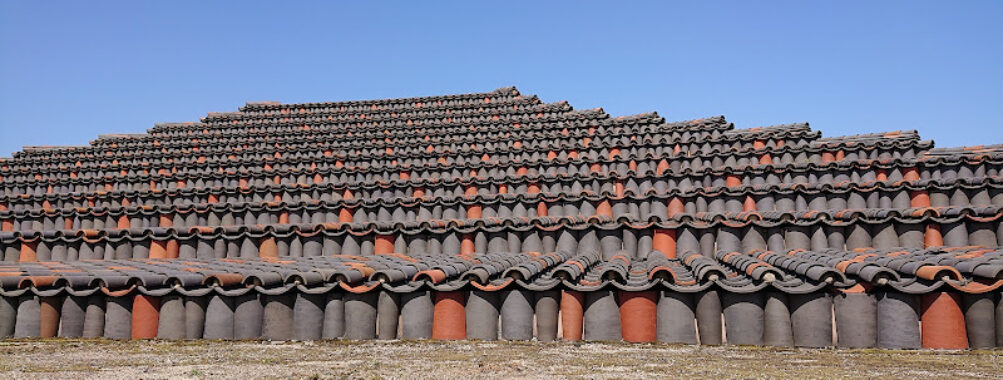
Doto
Table of Contents
Location
Places to Stay Near Doto
Find and Book a Tour
Explore More Travel Guides
No reviews found! Be the first to review!
Description
During my recent journey through Sakai, I had the pleasure of exploring Doto—a fascinating attraction located at 2164 Dotocho, Naka Ward, Sakai, Osaka 599-8234, Japan. Stepping into Doto feels like stepping into a place where history meets everyday life in the most unexpected ways. The area is rich in character, and you can immediately sense the weight of tradition mingling with a modern spirit. I was particularly drawn to the historical narratives woven into every corner of the site, a place where notions of gyōki and the intricate artistry of roof tiles tell their own silent stories.
Unlike many well-trodden tourist spots, Doto offers an unhurried experience that allows you to soak in details at your own pace. Whether you’re wandering through the park or pausing to admire an unusual pyramid structure that hints at a layered past, the atmosphere is both contemplative and refreshing. As you stroll along the pathways, you’ll notice transitions that take you from seemingly simple park landscapes to unexpectedly thought-provoking elements of historical significance. It was clear that Doto is not just about viewing relics or monuments—it is about experiencing history in a tangible way.
One of the most endearing aspects of Doto is how it reflects the subtle charm of Sakai. Here, ancient traditions have not been lost; rather, they have been carefully preserved and integrated into the daily life of the community. Observing the well-preserved remnants of traditional craftsmanship, especially in the form of roof tiles and other architectural nuances, I felt as though I was connecting with a lineage of skilled artisans who once lived and worked in this very area.
My walk through Doto was punctuated by moments of quiet wonder. Sitting on a bench in the park, I spent time sketching the silhouette of the pyramid structure against the changing sky. The interplay between light and shadow on the weathered surfaces evoked memories of stories passed down through generations. It struck me that this is not merely a tourist attraction—it’s a living museum where every step tells a tale of cultural evolution. As you wander, you might even catch whispers of local lore that detail the legacy of figures like gyōki, whose influence once spread far and wide across the region.
Key Features
- Historical Significance: Doto is steeped in history, reflecting the rich legacy of Sakai. Every structure, from the old roof tiles to the uniquely designed pyramid, holds stories that highlight the region’s past.
- Intricate Roof Tiles: One of the highlights is the traditional roof tile work that offers a glimpse into the architectural practices of bygone eras. These details speak volumes about the craftsmanship of the local artisans who once flourished here.
- Distinct Pyramid Structure: Among the many attractions, the pyramid structure stands out. It’s not only a visual treat but also a subject of numerous local tales and historical interpretations.
- Relaxing Park Environment: The park area at Doto is well-suited for peaceful strolls. Its well-maintained paths and benches invite visitors to pause and enjoy the quiet ambience while reflecting on the historical significance around them.
- Family-Friendly Atmosphere: Although Doto isn’t specifically about thrills or high energy, it’s an engaging experience for families. Kids will enjoy exploring the spacious park and you’ll appreciate the slow pace that encourages learning through observation.
- Local Cultural Insights: You can immerse yourself in local history as you learn about figures like gyōki and the traditional practices that have molded the community’s identity over centuries.
Best Time to Visit
Determining the best time to visit Doto involves considering both the weather and the seasonal activities in Sakai. Based on my personal experience and local insights, the optimal periods tend to be during the spring and autumn months. In spring, the mild temperatures and blossoming nature set an inviting backdrop for a leisurely exploration of the park and historical sites. You can expect gentle breezes and a landscape dotted with seasonal blooms that add a soft touch to the age-old structures.
Autumn, on the other hand, brings a tapestry of warm hues that beautifully complement the earthy tones of the historical architecture. The fall foliage creates a natural, picturesque setting that intensifies the feeling of stepping back in time. During this period, the sunlight casts a particularly warm glow on the roof tiles and pyramid, highlighting their textures and details beautifully.
Summer can also be a pleasant time to visit if you don’t mind a bit of heat. Early mornings or late afternoons are ideal to avoid the peak sun. Although temperatures tend to be higher, evenings in Doto offer cooler, more contemplative moments as you wind down from a day of exploring. Winter visits, while less crowded, bring a stark beauty to the site with crisp air and a serene environment. However, keep in mind that some outdoor areas might be less inviting during the coldest days, so dressing warmly is essential if you choose this season.
Regardless of when you decide to go, try to plan your visit on weekdays if possible. This timing usually means fewer crowds, which allows you to appreciate the quiet, reflective atmosphere of the space without the interference of peak tourist